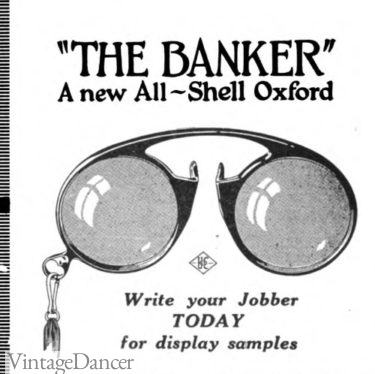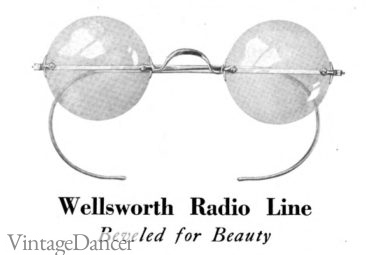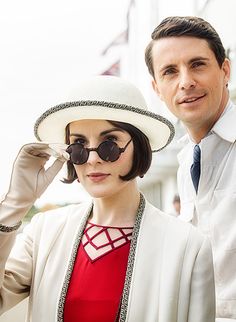“For full dress, gold mounted rimless pince-nez are refinement itself and absolutely correct.” Antic Hay, 1923
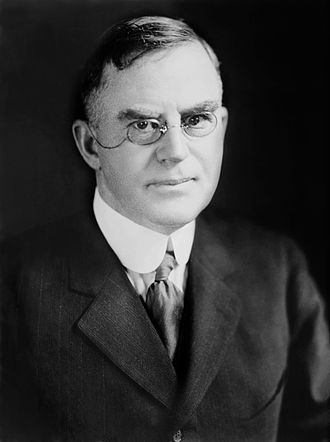
Henry Cantwell Wallace wears pince-nez spectacles 1921
1920s Eye Glasses History
Shop 1920s style eyewear and sunglasses here
Wire Frame Eye Glasses
Glasses in the 1920s continued to favor the round spectacle (with later shapes including octagon and oval) or the pince-nez style — rimless glasses that pinched the bridge of the nose instead of looping over the temple and ears.
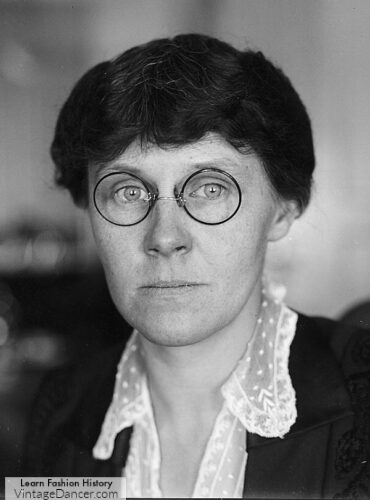
1921, woman wears pince-nez glasses
Pince-nez glasses were usually worn by older men who were used to the style but took off as a popular style. Indeed, 1927 even had President Coolidge replace his old black-rimmed spectacles in favor of the pince-nez with a gold nosepiece and a long black cord handing down one side.
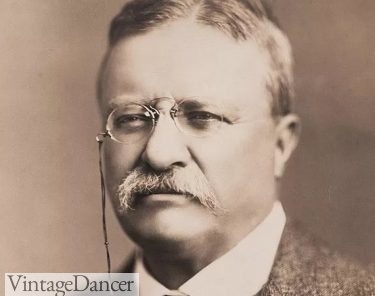
President Theodore Roosevelt’s pince-nez glasses with chain – 1918
There were guidelines for choosing a pair of glasses based on one’s face and features. Elderly white persons chose wine or gold frames, dark rims were best for large faces, light frames for small faces, low-set glasses for tall people and high-set glasses for short people.
- 1923 shell frame pince-nez
- Gold rimless glasses
Library frame glasses were rimless round glasses with a yellow or white gold or silver metal bridge and arms. They were popular in the Victorian Era, and made a reappearance in the early 20s as a subtle style of glasses suitable for those who had to wear them but didn’t want to look silly in the shell styles.
Businessmen favored the library frame, as the round lens was large enough for maximum visibility.
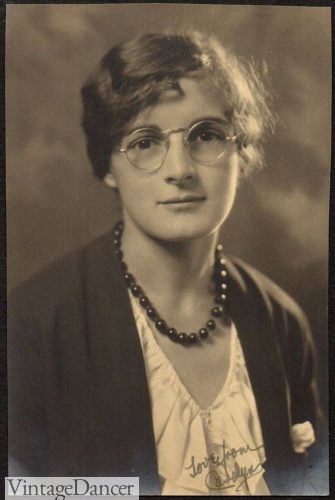
Late 1920s Gold frame eyewear
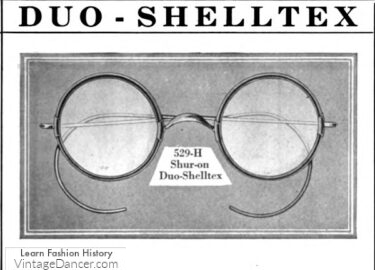
1923 library frame gold eyeglasses
1920s Round Frame Plastic Glasses
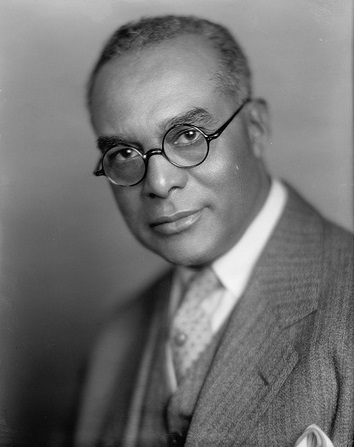
James A. Cobb wears thin frame round glasses 1925
Advances in plastics and tortoiseshell manufacturing increased the use of glasses. They were favored by women and men for daily use reading at home or dressing in sportier clothing.
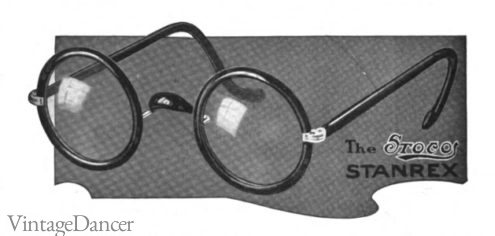
1923 Stanrex shell frame round eye glasses
The thicker the frame, the more sporty it looked — thin round frame glasses were seen as more ladylike and less obstructive of vision. Some frames had matching earpieces while other had nickel metal earpieces.
“For a semi-evening dress, shell rims with gold earpieces and gold nose-bride. ” Antic Hay, 1923
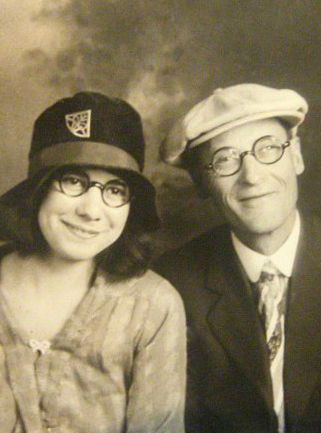
Round frames for men and women
Xylonite was a synthetic early plastic that formed dark-rimmed glasses in the same styles as the tortoiseshell. Black was the most popular color, with deep shades of brown as an alternative. Comedian Harold Lloyd wore his dark-rimmed glasses as part of his “look.”
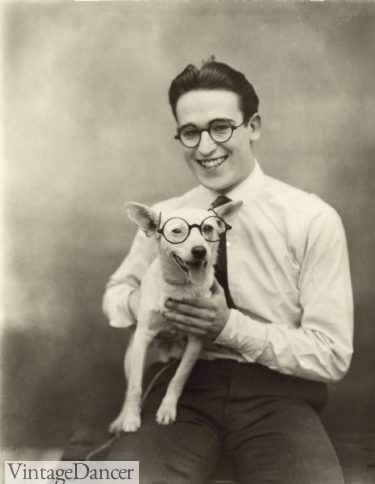
Harold Lloyd wears oversize glasses
Xylonite could also be used in thin frame spectacles, which was consequently a cheaper option for the lower classes. These thin frames were mostly round or octagon shaped.
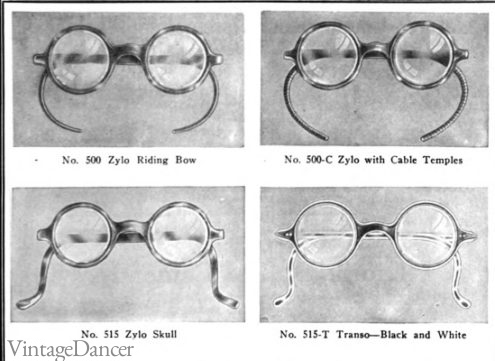
1923 Zylo frame glasses- thick and thin frames
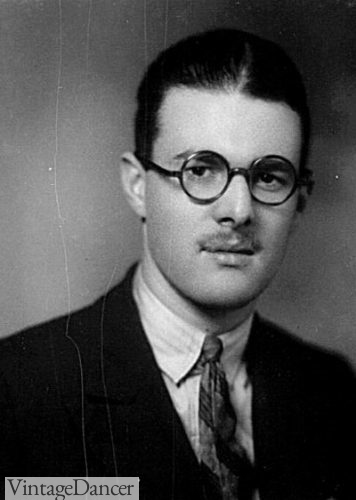
Australian Young Men in the 1920s Zylo glasses
Even a person who did not need to wear glasses unless reading would leave them on all day. Glasses were finally becoming fashionable, although 75 % of people surveyed said they did not look well in them.
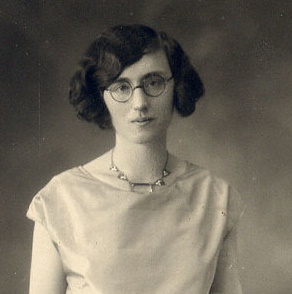
Ladies round eyeglasses
Vintage 1920s round glasses in heavy tortoiseshell frames with large clear or lightly tinted lenses were the signature style of the decade. The bridge rounded over the nose with the arms protruding out of the center of the frame. The nose piece could be lined in cork for more comfort.
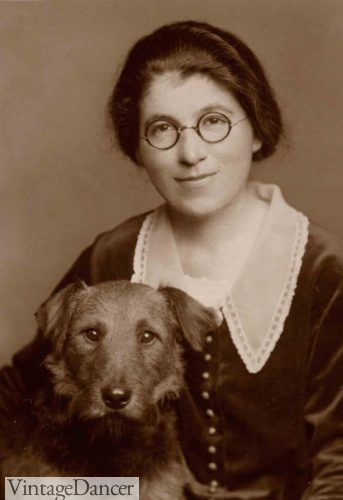
“A fashionable youth must now have his face carefully, plaster his hair back, leave of his hat, and protect his eyes with two aggressive lenses like automobile lamps- such is a synthetic portrait of the Americanized European.” Le Temps, quote in Literary Digest, June 1925
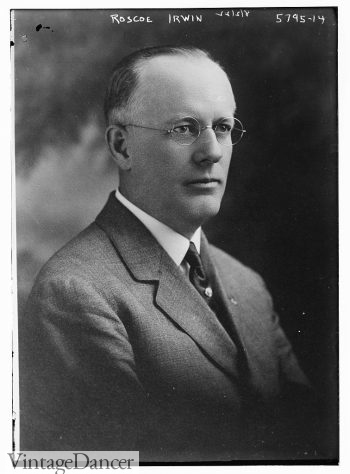
1922 Roscoe Irwin’s metal frame glasses
Metal frame glasses, especially in gold or steel, were an alternative to heavy shell frames. In the late 20s, white gold frames and rimless white gold earpiece eyeglasses were picking up momentum. Solid gold, rolled gold, and gold filled frames were the standard option in metal frames. Perfectly round was the best shape.
Lens sizes varied only a little in the 1920s. The average width was 1 3/4 inches or 44mm. Slightly smaller and larger sizes were offered to suit the each person’s face.
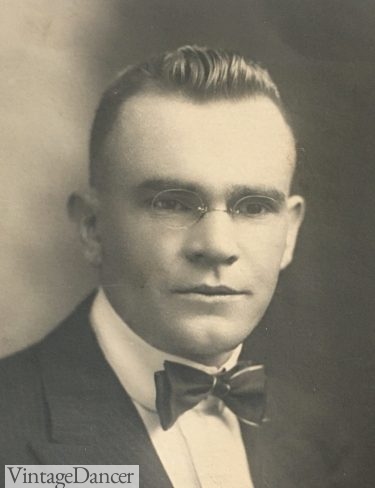
1920s Sunglasses
Did people wear sunglasses in 1920?
Crookes Sunglasses were developed by Sir William Crookes and sold by Bausch and Lomb, with special lenses available in light green, medium grey and amber brown tints. He accidentally made a light blue tint that became very popular, although later was known to be toxic.
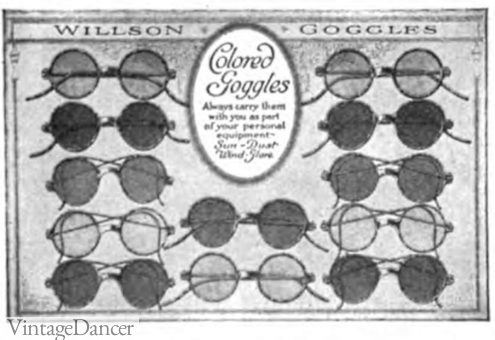
1923 Wilson Sunglasses “Colored Goggles”, sold for $1- 1.50 dollars (USA)
Sun googles as they were called, caught on quickly as a sporty set of eye shades for summer days, but were also promoted as winter wearable “to relieve the eyes from the glare of indoor lighting during the dull afternoons and long evenings of the winter season.” The term sunglasses or sun glasses was also used, but less often than goggles for most of the 1920s.
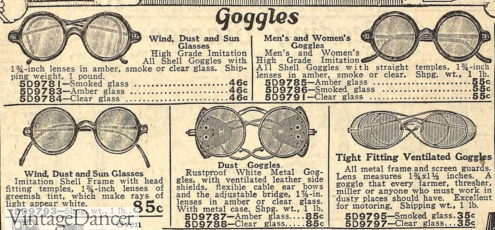
1925 Sears sun glasses and goggles
Sunglasses’ initial marketing was promoted for outdoor sports and activities such as driving cars, skiing, and farm work (dust protection.) Some had leather side piece or full leather cases for extra protection. The casual sun goggle used the same thick frames as eye glasses.
1920s sunglass lenses came in smoked (grey), amber (brown), green or clear lenses. Green lenses were thought to change yellow sunlight into white light and thus reduce the sharpness. Red lenses, blue-green lenses, yellow-green lenses were also know to protect infra-red rays from penetrating eyes. They changed the color of objects and were not worn by the general public.
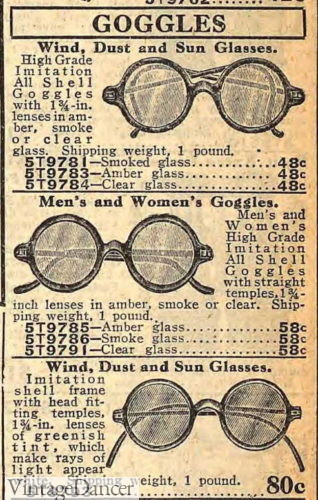
1924 Goggles or sun glasses
In 1927, Bausch and Lomb enthusiastically concluded “there is hope that in the not too far distant future it may be possible to make glasses stylish and to sell them as jewelry. That is what we have got to come to.”
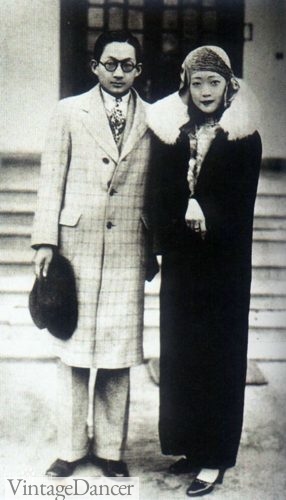
The last empress of China, Wanrong and her brother Runqi ca. 1920s wearing sunglasses
How much were a pair of sunglasses in the 1920s? Eyeglasses and sunglasses cost about $1 in the 1920s. You could find pairs for as little as 60 cents or up to $20. In modern USA currency that is about $20 to $350 per pair.
What brands on sunglasses were sold in the 1920s? A few American brands were Wilson, B.B.W, Frank Krementz, Wellsworth, Humboldt, Shur-on Optical, OPC Optical Products Corp, Sears and many others. Most are no longer in business today. Brand names meant little to people in the 1920s. Many eyeglasses and sunglasses were not imprinted with the brand name.
Continued into 1930s eyewear history
Shop 1920s style eyewear and sunglasses here.
- 1920s round sunglasses in Downton Abbey
- My 20s sunglasses, metal frame
Debbie Sessions has been teaching fashion history and helping people dress for vintage themed events since 2009. She has turned a hobby into VintageDancer.com with hundreds of well researched articles and hand picked links to vintage inspired clothing online. She aims to make dressing accurately (or not) an affordable option for all. Oh, and she dances too.
